Comitán, Chiapas 作者: 来源: 发布时间:2021-11-16
1.Population and Area
Pop: 141,013
Area: 1,043.30 km2 (munip.)
Elev: 1635 masl
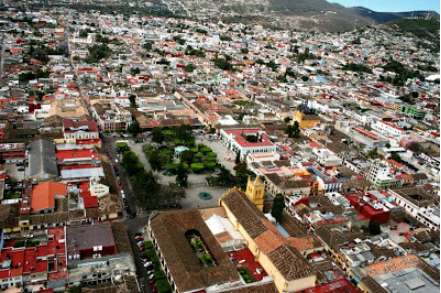
Comitán location in Mexico within the state of Chiapas
https://goo.gl/maps/yjhwpLvoedbesPqa9
2. Natural geography
Nature and weather
Flora and fauna
The most common species are: Tenocté (leafy tree with white flowers that blooms in spring, traditional in the city), nance, oak, mahogany, cypress, pine, romerillo, sabino, chamomile, mate, cedar, ceiba and chicozapote.
The most common are: Snakes: tropical rattlesnake (Crotalus durissus), red-backed coffee snake (Ninia sebae), scorpion, lizard, arroyera, palustre. Birds: roadrunner, chachalaca (Ortalis vetula), sparrow hawk, roadrunner, sparrow (Passer domesticus). Mammals: rabbit, weasel, opossum (Didelphis marsupialis), gray fox (Urocyon cinereoargenteus), coyote (Canis latrans), shrew, squirrel (Sciurus aureogaster), armadillo (dasypus novemcinctus).
Physiography
The municipality is constituted for the most part by plains that are interrupted by hills, either isolated or forming cords, to the south, the terrain descends towards the central depression, locating in this area rugged terrain.
Geology
The soil of the municipality is made up of alluvial soil (formed in the quaternary period and very scarce); limonite-sandstone sedimentary rock, (formed in the tertiary period, also rare); and limestone sedimentary rock (formed in both the Cretaceous and Tertiary periods, and predominant soil composition)
Hydrography
The hydrography of the municipality is made up of the Rio Grande de Comitán, 6 which drains into the Tepancuapan lake in the neighboring municipality of La Trinitaria and the most important lake is Jusnajab. Other streams are: Yalisac and Solferín.
Biotic Traits
The vegetation corresponds mostly to pine-oak forest.
Köppen Classification: Tropical Savanna Climate
Tropical savanna climates have monthly mean temperature above 18°C (64°F) in every month of the year and typically a pronounced dry season, with the driest month having precipitation less than 60mm (2.36 in) of precipitation. In essence, a tropical savanna climate tends to either see less rainfall than a tropical monsoon climate or have more pronounced dry seasons than a tropical monsoon climate. Tropical savanna climates are most commonly found in Africa, Asia and South America. The climate is also prevalent in sections of Central America, northern Australia and North America, specifically in sections of Mexico and the state of Florida in the United States.
The Köppen Climate Classification subtype for this climate is "Aw". (Tropical Savanna Climate).
The average temperature for the year in Comitán de Domínguez is 66.6°F (19.2°C). The warmest month, on average, is May with an average temperature of 70.0°F (21.1°C). The coolest month on average is January, with an average temperature of 62.4°F (16.9°C).
The highest recorded temperature in Comitán de Domínguez is 99.5°F (37.5°C), which was recorded in April. The lowest recorded temperature in Comitán de Domínguez is 32.9°F (0.5°C), which was recorded in January.
The average amount of precipitation for the year in Comitán de Domínguez is 41.7" (1059.2 mm). The month with the most precipitation on average is September with 8.6" (218.4 mm) of precipitation. The month with the least precipitation on average is January with an average of 0.3" (7.6 mm). In terms of liquid precipitation, there are an average of 133.8 days of rain, with the most rain occurring in September with 21.2 days of rain, and the least rain occurring in March with 3.7 days of rain.
https://www.weatherbase.com/weather/weather-summary.php3?s=987205&cityname=Comit%E1n+de+Dom%EDnguez%2C+Chiapas%2C+Mexico&units=
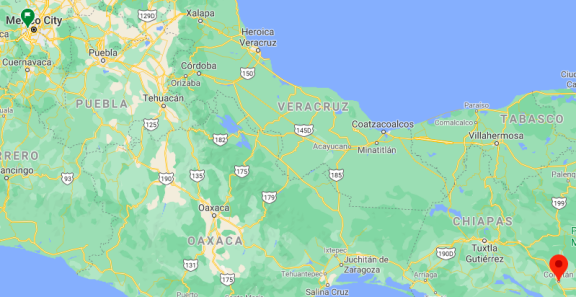
Getting there and around
Get there
By air – The closest airport to Comitan is at Tuxtla Gutierrez, the state capital. You can fly to Tuxtla Gutierrez from Mexico City.
By car –The distance between Mexico City and Comitán is 985 km. The road distance is 985 km and takes 13h 30m, approximately to get there. The part of the trip from Tuxtla Gutiérrez to Comitan is pretty efficient now, especially as half the journey (to San Cristobal de las Casas) can be done on a high-speed toll road.
By bus – You can travel to Tuxtla Gutierrez on a luxury bus from Mexico City—the trip takes around 18 hours. From there, take a local bus direct to Comitan or to San Cristobal de las Casas and connect from there. The bus you take from Tuxtla Gutierrez may stop at San Cristobal anyway—check locally.
Car Rental – To explore Mexico’s provincial towns and cities—including its beach locations and the scenery and attractions near them— consider renting a car for your visit. Having your own car will give you more flexibility than using public transport options and, in some cases, offer you access to places which are otherwise difficult to visit without the use of a car.
COVID19 – International entry into Mexico from United States
Allowed for: All visitors arriving by air. Mexico land borders are closed to non-essential travel
Restricted for: There are no current restrictions.
Get around
Local Buses – Local buses and mini-buses (combis or micros) are available locally for a fraction of the cost of a taxi around town. You need to speak Spanish to be able to ask for directions or ask the driver to tell you where to get off.
Taxis – Taxis in most of Mexico’s towns and cities are not metered, so agree your price before you get in. Taxi travel is very affordable in Mexico, in comparison to the USA, Canada and Europe, and so provides a viable means of public transportation in Mexico. Your hotel can arrange taxis for you; some post their rates on a board in the lobby; taxi hotel rates are usually higher than cabs you hail off the street. If you speak Spanish, you will have a distinct advantage and be able to negotiate a price with the driver.
Uber is expanding rapidly across Mexico and now offers services in cities across the country, including: Mexico City, Toluca, Cuernavaca, Puebla, Querétaro, León, Aguascalientes, San Luis Potosí, Guadalajara, Monterrey, Hermosillo, Tijuana, Mexicali, and Mérida. Uber has been adding Mexican cities to its network every year, check for availability when you arrive at your destination in Mexico.
Cabify and Didi are also developing and currently operate in cities including Mexico City, Toluca, Monterrey, Puebla, Querétaro and Tijuana. Check for availability in the city you are visiting.
These services offer people with smartphones a way to book a cab through a mobile app for a pre-agreed price. Fares are comparable with Sitio type cabs, and sometimes trade at a premium to this when local demand increases.
https://www.mexperience.com/transport/taxi-travel-in-mexico/#51
3. ECONOMY
GDP: 7 015.7 M MXN (2010)
https://www.researchgate.net/publication/323024442_Estimacion_no-parametrica_del_producto_interno_bruto_de_los_municipios_de_Mexico
4. Industry characteristics
The main industrial sectors in Comitán de Domínguez (based on total gross production) in 2014 were Retail Trade ($ 1.12M MX), Manufacturing Industries ($ 759k MX), Wholesale Trade ($ 642k MX), Media Information Massive ($ 222k MX) and Temporary Accommodation and Food and Beverage Preparation Services ($ 222k MX).
In 2019, the Net Foreign Direct Investment in Comitán de Domínguez reached a total of US $ 249M, 262% more than the amount invested during 2018 (US $ 68.9M).
https://datamexico.org/es/profile/geo/7019
5. Attractions
Colonial Center
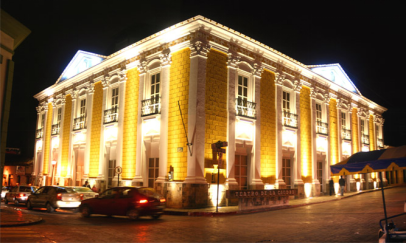
Comitan’s main plaza (also known as the Zocalo) is an attractive, multi-level mix of benches, trees and art sculptures; there is also a fountain on west side. Immediately off the main square you’ll find Church of Santo Domingo, the Casa de la Cultura (House of Culture) as well as the city’s main municipal building. It’s worth wandering around here and discovering the small shops and boutiques, many selling locally crafted items.
As if it were an invitation to make you feel at ease, Comitán offers moments of cohabitation for those who dare to explore its streets.
On weekends, in front of the Palacio Municipal (Municipal Palace), it is common to find popular music ensembles that gather the families to enjoy the day. It is not strange to see couples of any age dancing, whether it is a danzón or mambo, as gender is the least important thing when it comes to having a good time.
If you head to Parque Central (Central Park) you can explore their stalls at your convenience. There, you will find handicrafts, travel souvenirs and even bottles of “Comiteco”, a spirita drink obtained from the maguey comiteco. Just in case you want to sing a song, a sip of this drink will tune up your throat.
Museums in Comitán
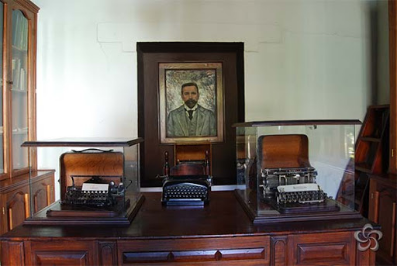
Museum of Dr. Belisario Dominguez – The former home of the Doctor/Martyr after which the town was named can be found one block southeast of the main plaza. This is a typical 19th century house with delightful balconies and gardens which complement the historic architecture of the building. Dr. Belisario was an outspoken senator during the presidency of Victoriano Huerta. After he spoke out against Huerta’s record of sponsoring political murders, he was himself murdered. The house has six rooms which give an insight into the life and times of Dr Belisario Dominguez.
Casa de la Cultura (House of Culture), on the southeast corner of the main plaza has a small exhibition of local history and culture, and by walking through it you connect to the Museo Arqueológico de Comitan (Archaeology Museum), which keeps artifacts from the area’s local archaeology centers.
To see some paintings created by some of Mexico’s leading artists, including Rufino Tamayo, visit the Museo de Arte Hermila Dominguez Castellanos, two blocks southeast of the main plaza; Admirers of fine art should also visit the nearby Museo Parador de Santa Maria.
Iglesia de Santo Domingo
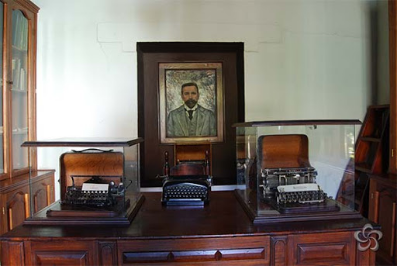
This church, situated on the main plaza, was built during the 16th and 17th centuries; its attractions include a neoclassical facade and block tower that reflect Mudejar art. Inside the church is a single level, with two chapels added during later periods. The main one—made of marble —was installed in 1956 to mark the church’s 400th anniversary.
Built next to the Exconvento Dominico (Dominical Exconvent), this site houses the “santo patrono” of Comitán (Patron saint of the city of Comitán).
https://www.visitmexico.com/en/chiapas/comitan
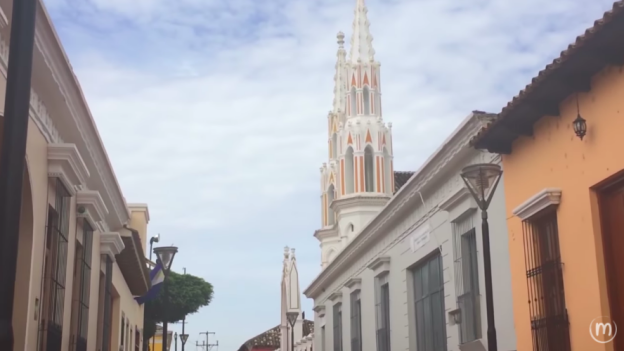
Lugares que visitar en Comitán Chiapas
https://youtu.be/I9OlXzLA7tE
6. History
The old town was founded in a swamp by a large group of Mayan-Tzeltal indigenous people. The Spanish town of Comitán was founded in February 1528 and elevated to a city in 1556 by Dominican friars, belonging to the captaincy of Guatemala, in the pre-Columbian era it was called Balún Canán (Mayan), which means place of the 9 stars. On June 19, 1768, the first internal territorial division of the province of Chiapa was made, leaving Comitán within the mayor's office of the royal city. In 1774 Comitán is a town within the province of llanos, having as an annex Zapaluta. On August 23, 1821, the chaplain of the troops of the Húsares squad of the city of Santa María Comitán, Fray Ignacio Barnoya, Coadjutor Episcopal Vicar of Santo Domingo, convinces Don Matías Ruiz, Captain of the supreme company and accidental commander of the said squad, to help with their soldiers, if necessary, in the proclamation of the independence of the city that was being promoted by Fray Matías de Córdova, Fray Juan Perote and Fray Ignacio Barnoya himself. Don Matías Ruiz, the unknown hero of Comitán, decides not only to support with arms in hand but with financial resources and with his own person, again, Fray Ignacio Barnoya convinces the trustees Miguel José Ortiz and Victoriano Cancino to propose to the city council the proclamation of the independence of the city of Comitán from both the General Captaincy of Guatemala and Spain. On August 28, 1821, the city of Comitán and its understanding were declared free and independent. They immediately communicate this historic decision to the royal city. It was in this city of Comitán where the Chiapas and Central America Act of Independence was signed, in 1824. It is also called the cradle of the Independence of Chiapas. On November 13, 1883, the state was divided into 12 departments, with one of them being the head Committee. In 1915 it became a municipality.
7. Other Information: Cuisine of Chiapas and Comitán
The cuisine of Chiapas is a style of cooking centered on the Mexican state of the same name. Like the cuisine of rest of the country, it is based on corn with a mix of indigenous and European influences. It distinguishes itself by retaining most of its indigenous heritage, including the use of the chipilín herb in tamales and soups, used nowhere else in Mexico. However, while it does use some chili peppers, including the very hot simojovel, it does not use it as much as other Mexican regional cuisines, preferring slightly sweet seasoning to its main dishes. Large regions of the state are suitable for grazing and the cuisine reflects this with meat, especially beef and the production of cheese. The most important dish is the tamal, with many varieties created through the state as well as dishes such as chanfaina, similar to menudo and sopa de pan. Although it has been promoted by the state of Chiapas for tourism purposes as well as some chefs, it is not as well known as other Mexican cuisine, such as that of neighboring Oaxaca.
Chiapas cuisine differentiates from that of the rest of Mexico in that it does not rely as heavily on chili peppers as the other regional Mexican cuisines. They mostly appear in condiments. Regional chili peppers include the “chile de siete caldos” (chili pepper of the seven broths) indicating that one is sufficient to flavor all seven and the simojovel, which is far too hot to be used in quantity. Chiapan food favors a combination of slightly sweet seasonings in the main dishes, which include tomatoes, cinnamon, plantains, prunes and pineapple. The Chiapas version of chile relleno includes peas, almonds, peaches, dried candied pineapple and raisins.
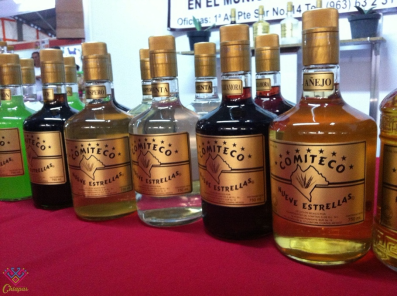
Comiteca gastronomy, as well, is full of a strong personality that reflects the meeting of two roots -The autochthonous and the Spanish- This region has a wide range of cheeses, sausages and various snacks that we can savor from the different markets to the best restaurants in the region; Among the most representative dishes are: sausage, chinculguaje, compound bread cake, chalupas, chamorro or bone in picles, tortillas with a seat, pitaul tamale, most of these typical snacks can be found in typical diners and inns of the city.
The cool highlands share the affinity for cured meats, including the city of Comitán. The city is also known for pit barbecued chicken, a salad of hearts of palm in vinaigrette and cheese. They also produce a drink called comiteco, which is fermented from maguey and a drink called mistela, made from fruits such as mango, tejocote and plum.
On Sundays after mass, different merchants usually sell food in the parks outside the churches: tongue in pebre, rotten pot, chanfaina to accompany these dishes, zaquil, powder juan and palm hearts, these last two are for sale outside the local markets. . Their sweets are a delight among them we find the chimbo, salvadillo with temperante, nuéganos, they are obtained in the stalls of itinerant confectionery artisans that are located around the Santo Domingo Central Park.
Main dishes of this city are:
Entries: Chinculguaje, Compound bread, Chamorro in picles, Chalupas, Salpicón, Butifarra, Pellizcadas or tortillas with a seat, Shuti broth, Tamales, Manjar patzitos, Momon leaf (holy leaf), Pituales (red bean), Mole.
Main Dishes: Baked leg, Pebre tongue, rotten pot, spine stew, pork rind with beans, chiapaneco stew, chanfaina, bald fish.
Accompanying: zaquil, Polvojuan, Chile-vinegar, Picles.
Sweets: Chimbo, African, Marquesote suede, Peanut sweet, Coyol sweet, Nuegados, Peanut breaded, Cream donuts, Marshmallow, Salvadillo with temperante.
Breads: Marquesote, Salvadillo
Drinks: Temperant, white Pozol, jocoatole, Chilacayote water, Comiteco liquor.
http://www.turismochiapas.gob.mx/sectur/comiendo-en-comitan
8.Contact Information

City Mayor: Emmanuel Cordero Sánchez
Contact number: +52 (963) 632 8070
Govt. Office Address: Palacio Municipal S/N, Colonia Centro, C.P. 30000
Facebook: https://www.facebook.com/EmmanuelCorderoSanchezOficial
Twitter: https://twitter.com/EmmanuelCorSa
Website: https://www.comitan.gob.mx
E-mail: presidencia@comitan.gob.mx
